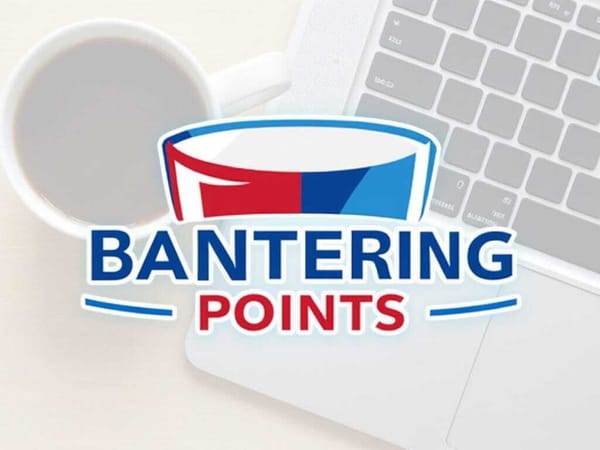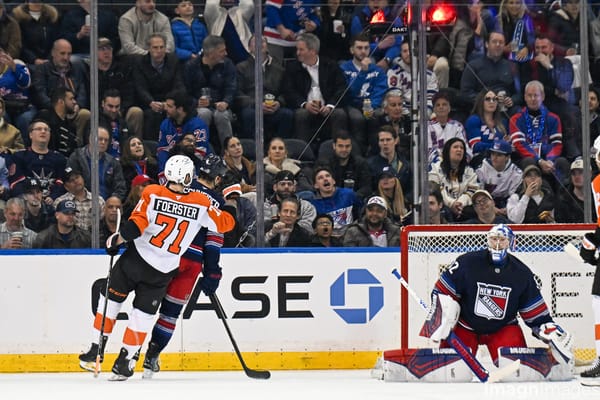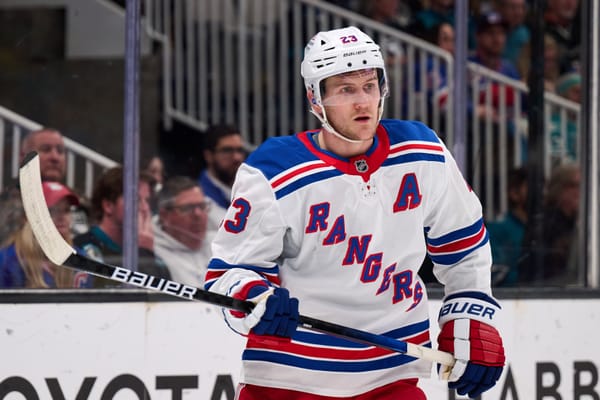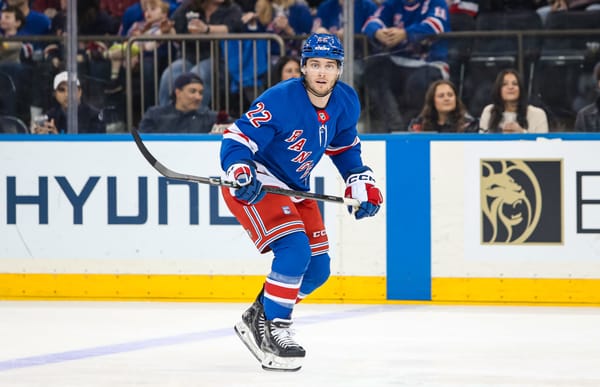How Rangers Can Find Quality Character This Summer
By putting a premium on leadership, New York can be sure they’re raising their kids in the right environment.
The Unrestricted Free Agent (UFA) market is set to open on July 1 and, strange as it may be, it’s a market the New York Rangers are expected to be minor players in. These same Rangers, who have been no strangers to the “frenzy” the beginning of July often represents, are already out on three-year L.A. King-to-be, Ilya Kovalchuk, and presumably won’t be serious suitors for John Tavares, Joe Thornton, or James Neal, among others.
Though it’s an odd feeling to recognize that the rebuilding club won’t be their usual summer force on this front, it’s odder that for the first time in nearly 15 years, they’re going to be true to their word on this rebuild/retool/reset by giving their young players every opportunity to impress.
Yet despite preemptively folding on this summer’s big game, the Blueshirts are still expected to make a pitch for any number of “character players” who Jeff Gorton will identify and target. These would-be Rangers will be tasked with mentoring and bringing along an important collection of talented youngsters who should, in time, compose a new core on Broadway.
Character is a Good Thing, Despite What Twitter Says
“That is the expectation, that we are going to provide opportunity for young kids,” Gorton told the media following the first day of development camp. “But we’d like to add a few guys, some character players that can come in and maybe teach these guys the ropes, that have pretty good pedigree and done some good things and come here to help us in certain situations.”
While “character” has become something of a pejorative term—often applied to mask the faults of less talented players by championing their intangible values—it’s a positive element to roster building. Every Stanley Cup-winning roster has its own collection of these types of players and, season after season, rookies and youngsters credit them with aiding their growth in the league.
As I wrote earlier this month, “rebuilds often put a heavy focus on the most skilled young players, but the conditions those fledglings are groomed in is of equal, if not greater importance,” – a sentiment Gorton appears to agree with.
“Listen, we want young kids to make it and do well, but we won’t put them in a tough spot,” Gorton went on to say in addressing his plan ahead of next season. “If they’re not ready, we’re not going to put them in and force them in. We’ll take our time.”
The Rangers do have some internal options who will, no doubt, help to keep this train moving, including young veterans Chris Kreider and Kevin Shattenkirk. But given how much of the roster was gutted for assets around the deadline, and how much more can still change before the start of next season, utilizing the free agent market to backfill roster holes would be a very pragmatic approach.
Though it is important not to overdo it on the free agent market where too many signings (especially ones with too much term) can box out young players from the openings they need to make a good impression, the market should be rife with options this summer. In fact, thanks to a number of young veterans not receiving qualifying offers, a market that already expected to see many quality candidates enter the field could make the Rangers more appealing to vets who might otherwise head elsewhere.
Fishing in Free Agency
Speaking to David Quinn’s desire to see a “harder, grittier, more straight-line game,” Larry Brooks of the New York Post suggested the Rangers—whose roster currently lacks in this regard—could seek out candidates such as Leo Komarov, Antoine Roussel, and Tommy Wingels this summer.
In Komarov in particular, the Rangers could kill two birds with one stone: acquiring as quality a leader and dressing room presence as there is to be had, and addressing the mandate to improve in team toughness.
The 31-year-old Finnish–Russian product is among the league-leaders in hits—tied for 12th among forwards with 984 in 285 games—over the last five years, but also boasts some decent offensive production. His 48 goals and 115 points rank eighth among Toronto Maple Leafs’ skaters in that same span. He’s also maintained an integral role as a penalty killer for the Leafs under Mike Babcock, despite receiving a reduced even strength role, as their roster continued to infuse with more young talent.
Though it’s unclear what interest, if any, he’d have in joining another rebuild having lived through the Leafs’ own, there’s little doubt he could provide the kind of character the Rangers are looking for.
The Blueshirts could also turn their eye toward a younger version of Komarov in Antoine Roussel. Earlier in June, I made a strong suggestion that acquiring him this summer would dramatically benefit the Blueshirts, whose new head coach has vowed his team will play “in the opposition’s faces.”
The hard-working, in-your-face-type is a pest who plays a heavy 200-foot game despite his middling 6’0, 200-pound frame. On paper, he could fit Coach Q’s preference to a tee. Like the trade that brought Wayne Simmonds to the Philadelphia Flyers years ago, unleashing number 21’s brand of antagonism on the Metropolitan division might be a worthy cause for the Rangers to try their hand at.
Like Komarov, Roussel could bring numerous elements to New York that Quinn should find especially useful. Beyond his agitating constitution and veteran presence, he’s also grown into a proficient penalty killer. So much so that SportsDay’s Josh Lile found that Roussel had the second-best expected goals against per 60 among Dallas Stars penalty killers last season.
Wingels, meanwhile, is years removed from his breakout seasons in San Jose between 2013 and 2015, but could still prove a useful element as a depth forward. Though he’s the least enticing name among the group, he’s a right-handed shot and does have the kind of size and playing style that lends itself to straight-line hockey.
Beyond the small group of options Brooks suggested lies additional considerations, including a familiar face or two, like Michael Grabner and Rick Nash. Both players aren’t just intimately familiar with much of this remaining Rangers team but, especially in Nash’s case, are renowned for their leadership qualities. It’s unclear how much interest the Rangers have much in reuniting with No. 61 after he suffered another concussion with the Bruins—one which reportedly lead to his considering retirement—but Grabner has been connected with a return to New York for months.
Have heard UFA Michael Grabner connected to the Rangers but the two sides haven't talked. Doesn't mean it won't happen but nothing there right now. Lots of interest in the speedy winger - ten teams in the mix.
— Craig Custance (@CraigCustance) June 27, 2018
Also expected to make it to market this summer is Daniel Winnik, 33, who spent last season with the Minnesota Wild where he posted a respectable 23 points in 81 games as a versatile, multi-positional depth forward known for his defensive acumen. At 6’2, 210 lbs, he too is built for straight-line hockey, and his first-hand experience playing through a rebuild with Toronto could prove useful in guiding some of New York’s youngsters through their own.
Or, with Devante Smith-Pelly off the market, perhaps the Blueshirts will show interest in another recent champion in Jay Beagle. The 32-year-old pivot has made a name for himself as a checking center (who also plays wing) that is capable of providing adequate depth scoring despite his heavy defensive usage.
Rebuilding the Right Way
The Rangers made the right call to rebuild/retool/reset for future success. But they’ve also gone through too much pain in the last year to self-sabotage, and throwing young assets into the fire is likely to do that. Quality character players will help ensure they don’t undo the good they’ve done to start the rebuild.
No matter the specific personnel that Gorton may sign this offseason, character and experience should be championed. If this rebuild is to see its way through to long-term success, it’s going to require guidance for young players both on and off the ice.
While the front office will continue to do all it can to add to the organization’s pipeline of new hopefuls, it must also ensure that those young pups aren’t skating in a non-winning environment while being left to their own devices. Doing so wouldn’t just endanger their development, but the logical progression of the very rebuild they’re expected to be the face of.




